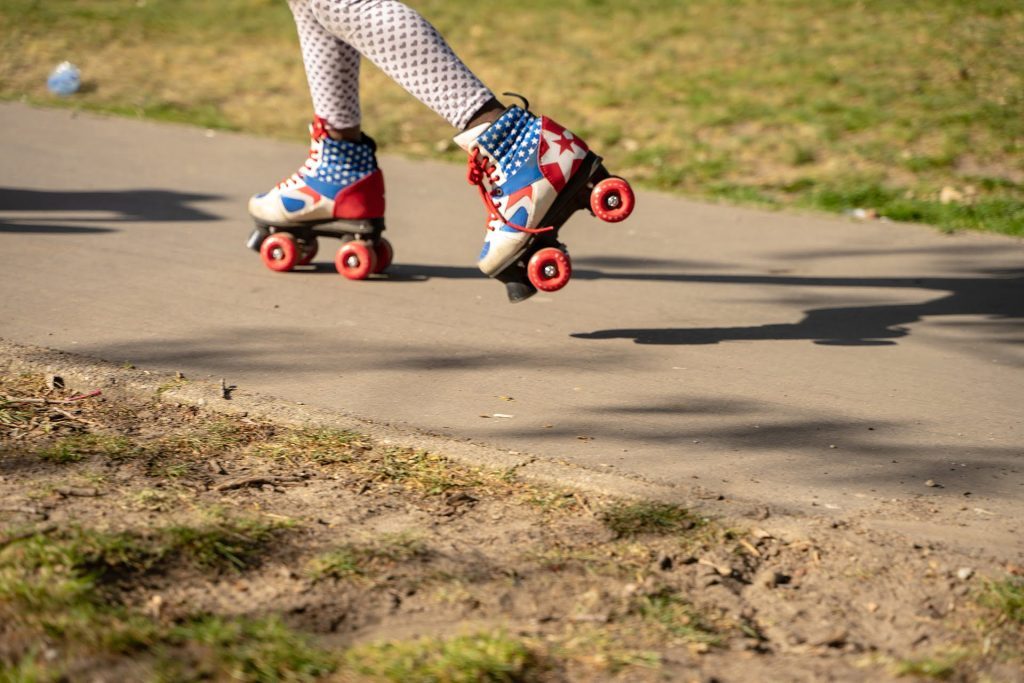
Table of Contents
About Trajectory Schema
Trajectory schema involves an interest in making and observing objects move through space. This schema emerges early as infants watch their wiggling arms and legs or track moving objects with interest. As they get older, they may experiment with dropping items from their highchairs or tossing toys through the air. Trajectory schema may also manifest in an interest in mark-making, where children can observe their pen, pencil, or paintbrush’s movement. We’ll look at more examples later in this post.
The authors of Understanding Schemas in Young Children advise that “Practitioners can help children to extend their trajectory schemas by providing appropriate materials and opportunities to explore. For example, if a child is interested in throwing objects, practitioners could provide a variety of safe projectiles and places to throw them against, into, on, up, over, or through. Some children may need frequent opportunities to run and chase each other, building on what they have already assimilated into their thinking, others may become interested in things that move in a straight line such as aeroplanes and birds.” (Louis, Stella; Beswick, Clare; Featherstone, Sally. Understanding Schemas in Young Children (Featherstone Professional Development) (p. 28). Bloomsbury Publishing. Kindle Edition).
After ideas for loose parts that support this schema, we’ll look at more examples of trajectory schema play.
Suggested Loose Parts
Here’s an incomplete list of loose parts that support this play schema:
- Balloons
- Balls
- Beads
- Bicycles
- Blocks
- Boards
- Boomerangs
- Bottle Caps
- Bowling Balls
- Bricks
- Brooms
- Bubbles
- Buckets
- Buttons
- Cable Spools
- Cardboard Boxes
- Cars And Trucks
- Caterpillars
- Chalk
- Clothespins
- Compasses
- Confetti
- Corks
- Corn Cobs
- Cotton Balls
- Craft Sticks
- Crayons
- Dancing Ribbons
- Dirt
- Doll Heads
- Doll Strollers
- Dolls
- Dried Beans
- Elastic
- Eye Dropper
- Fabric
- Feathers
- Fishing Rods & Reels
- Flagging Tape
- Frisbees
- Funnels
- Garden Hose
- Grass Clippings
- Gumnuts
- Hand Pumps
- Hinges
- Hockey Pucks
- Hula-Hoops
- Jump Ropes
- Kites
- Ladders
- Lazy Susans
- Leaves
- LEGOs
- Log Slices
- Marbles
- Markers
- Mesh Poufs
- Milk Crates
- Mud
- Office Chairs
- Pebbles
- Pencils
- Pendulums
- Pine Cones
- Pompoms
- Pull Toys
- Pulleys
- Rain Gutter
- Ramps
- Ribbon
- Roller Skates
- Rubber Band Powered Propeller Toys
- Rubber Bands
- Scarves
- Scooter Boards
- Scooters
- Seed Pods
- Shredded Paper
- Skateboards
- Sleds
- Slingshots
- Slinkys
- Sponges
- Step Stools
- Sticks
- Stones
- Stopwatches
- Straws
- Stuffed Animals
- Swings
- Tape Measures
- Teeter Totters
- Tires
- Train Sets
- Trampolines
- Tumbling Mats
- Wagons
- Water
- Yo-Yos
Have an idea I should add to the list? Share it in the comments or contact me.
Examples
Some examples of this play schema in action:

Observing how water drips, splashes, splishes, pools, flies, falls, and flows is a big part of some children’s trajectory schema play and exploration.
They’ll often experiment with other materials, like sand, similarly. Adults are not always keen to support such experimentation. It’s frequently labeled as bad behavior instead of being seen as a rich learning experience.

“Exploring a trajectory schema can be misinterpreted as bad behaviour by practitioners who don’t recognise it as learning. It’s important that we learn to recognise schematic exploration and to ensure we have suitable resources for this type of play,” writes Laura England in Schemas: A Practical Handbook (England, Laura. Schemas: A Practical Handbook (p. 24). Bloomsbury Publishing. Kindle Edition). These prescient words of Dan Hodgins fit nicely here: “We need to stop making moral issues out of developmental issues.” Caregives should work to set aside their personal feelings and do what they can to support the exploration and play–while keeping everyone involved safe and healthy.
Luckily, not all trajectory schema play involves hurling thousands of tiny stones through the air. Land-based trajectories are explored as well. From skates zipping along a sidewalk to marbles rumbling down a ramp made of sand, kids exploring this schema look for ways to engage with paths of travel.


They are also often interested in the trajectory of their bodies as they run, spin, zigzag, roll, leap, hop, and scamper through space. This is another way of exploring trajectory schema frequently labeled as bad behavior.

Tierney, that girl who can’t sit still, may not be trying to drive you crazy. She may be trying to explore trajectory schema.
Mark-making is another way children explore this schema as their pens, crayons, and paintbrushes map paths across sheets of paper.

Contribute content to Playvolution HQ
Brought to you by Explorations Early Learning
Thoughts On This Entry?
I’d love to hear your thoughts on improving this entry and suggestions for additional glossary additions in the comments below. You can also contact me with comments or concerns.
Browse Trainings
Post Author
Jeff Johnson is an early learning trainer, podcaster, and author who founded Explorations Early Learning, Playvolution HQ, and Play Haven.


Leave a Reply